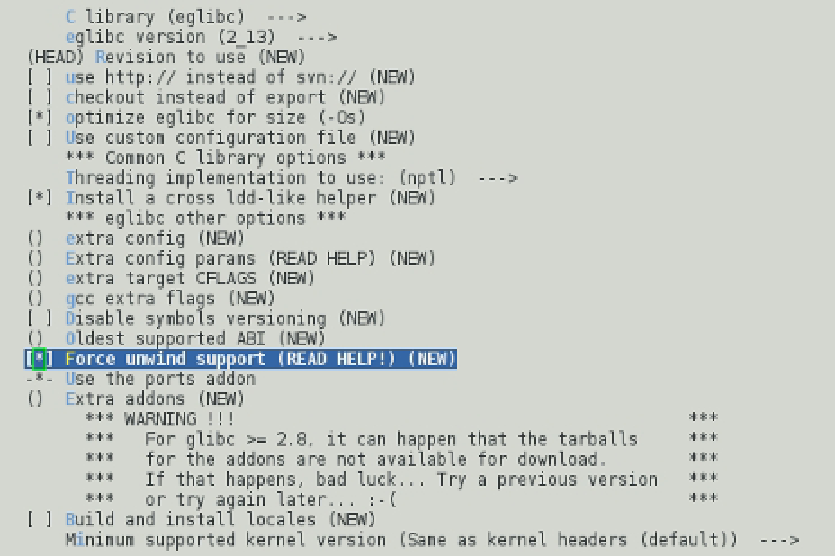Hardware Reference
In-Depth Information
than eglibc. Stay well away from the generic glibc: it's far from ideal for an embedded or small system. I also selected
2_13
as my version because this is the same version that the Fedora remix uses. I suggest you check to see what your
distribution uses. Finding your glib version is also quite simple. Just run the following command:
# ldd --version
Now look for the line that looks like the following, which is your glib version right there:
ldd (GNU libc) 2.13
There are also a lot of options to optimize your tool chain. For your initial build the only option I recommend
is the “optimize eglibc for size (-Os)”. By selecting this, your tool chain may be able to produce smaller binary files.
Less to execute and less in memory is always a good thing when you are resource-limited. This option will make your
compile times longer: no free lunch, remember. Leave the rest of the options at their defaults (see Figure
6-12
).
Figure 6-12.
The C Library page settings
Debug Facilities
There is only one other menu you should configure. That is the “Debug Facilities” page. On this page, select
gdb
and
strace
; you should not need the other tools for basic debugging. Don't worry about configuring any suboptions for
either of the tools. The default options for each tool will be fine.

